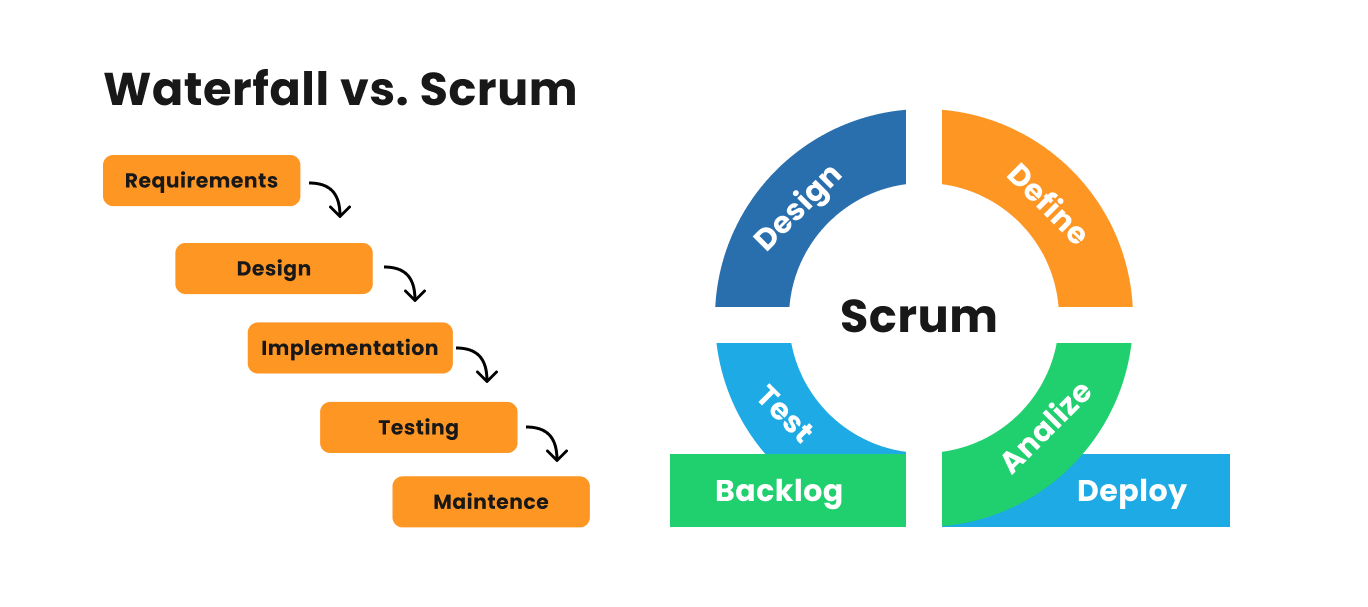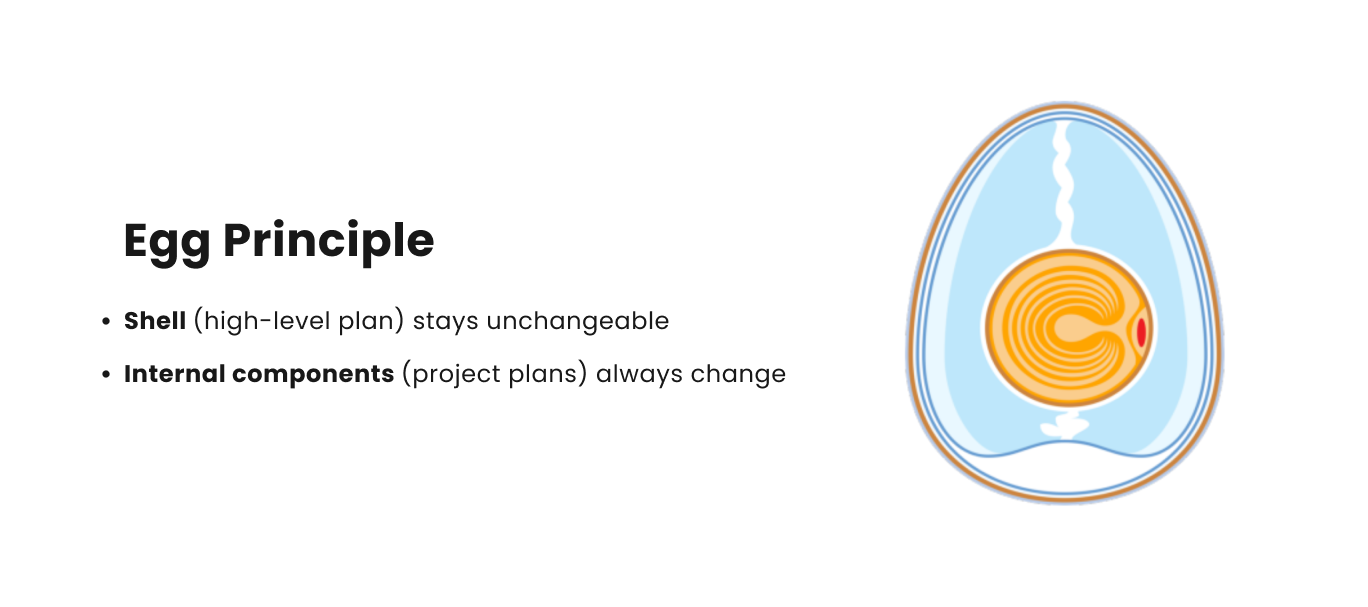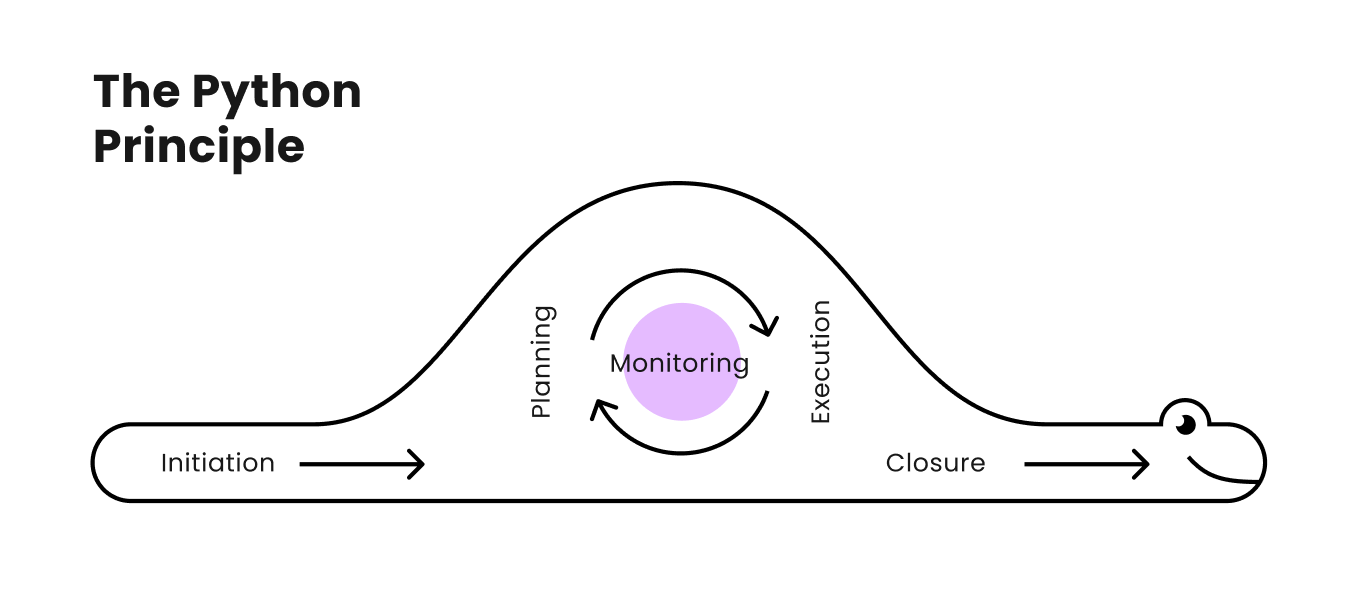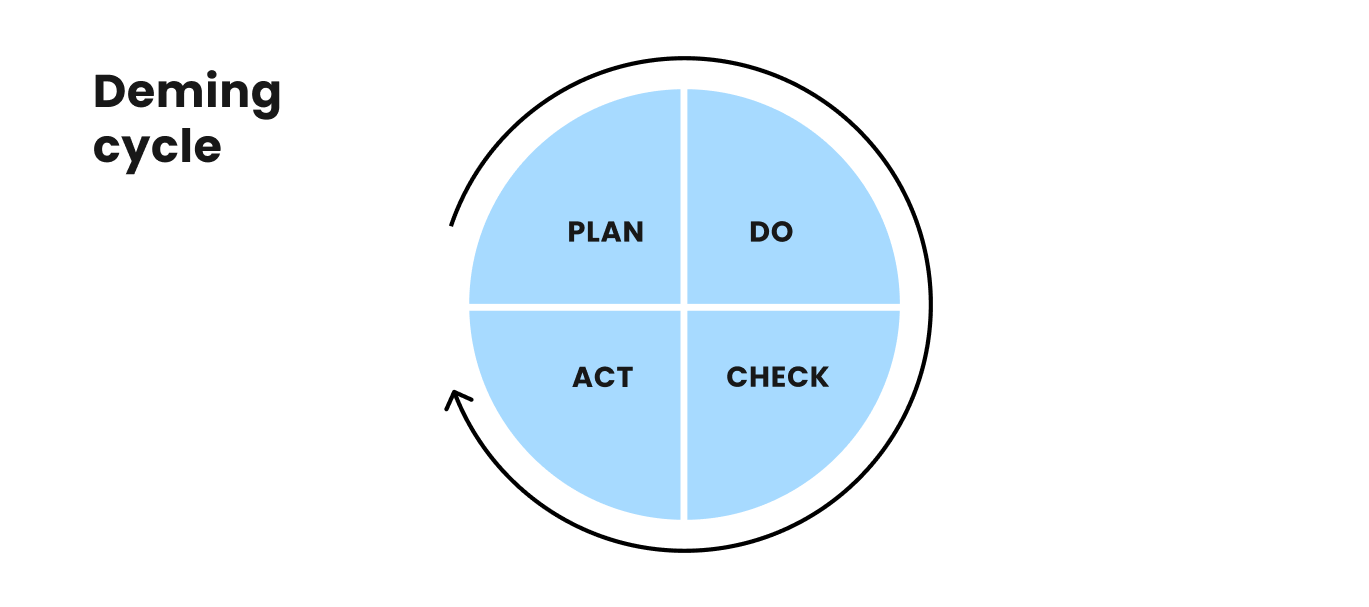Essential Project Management Principles
March 14, 2024 · 5 min read
The fundamental principles of the PMI standard are outlined in PMBOK, which is a body of knowledge on project management, written by a vast number of professionals. While it constantly evolves and serves as an excellent reference, it might be quite challenging to get its fundamental principles due to a rather dry and sophisticated language. In this article, we’re going to uncover them all.
Behind Waterfall and Scrum
Managers often fear turning project management into a rigid waterfall approach. The waterfall method involves detailing all plans from start to finish and strictly overseeing the process to ensure focus. However, this method struggles with the inherent high uncertainty of projects, leading to constant plan revisions without clear purpose.
To counter this, some abandon detailed planning, as seen in product approaches like Scrum, commonly used in software development. Instead of trying to estimate everything upfront, Scrum involves the customer in defining their requirements, which are noted in a backlog. The team then selects and works on these items in short iterations, typically two weeks, showing progress to the customer at the end of each cycle. If the customer is satisfied, they move on to the next set of items; if not, revisions are made.

This iterative process continues until all requirements are met. Scrum's strength lies in its flexibility and ability to handle variability. Over time, teams can better prioritize tasks and understand their capacity, improving their ability to estimate time requirements retrospectively. Additionally, new requirements can be added to the backlog as the project progresses.
However, Scrum's downside is that it doesn't address the project's finite nature. Customers often want to know when the project will be finished and how much it will cost. While Scrum effectively manages uncertainty, it doesn't provide clear answers to these questions, making it more suitable for product development rather than projects with strict deadlines and budgets. Therefore, if deadlines are crucial, consider carefully before opting for Scrum.
The Egg Principle
The Egg Principle in project management can be likened to a chicken egg. The shell, representing the project charter, is rigid and outlines the project's initial framework, including timeframes, costs, resources, and content. This document is concise and does not expand, much like an eggshell.
 Inside the egg, the white and yolk transform into a future bird, paralleling the development of project plans such as the risk register and project schedule. The Egg Principle addresses both the finiteness and uncertainty in projects.
Inside the egg, the white and yolk transform into a future bird, paralleling the development of project plans such as the risk register and project schedule. The Egg Principle addresses both the finiteness and uncertainty in projects.
When facing high uncertainty, traditional methods like the waterfall approach or Scrum may not suffice. Instead, the Egg Principle suggests creating a high-level project charter to reassure the customer about deadlines and budget. The team then estimates and plans in large blocks, detailing only the immediate weeks and months. This method, known as rolling wave planning, allows for flexibility and adaptability.
This approach saves time and effort, avoiding constant rewrites while providing a clear plan and deadlines. The project manager ensures the project (the chick) does not outgrow the charter (the shell). Internal plans must align with the charter, and any external changes in deadlines, content, or cost necessitate a fundamental project relaunch.
The Python Principle
The Python Principle in project management is straightforward. A project consists of elements that begin with initiation and end with closure.
During initiation, you decide whether to launch the project and define its scope. Once these decisions are made, initiation ends. The project concludes with closure, where you ensure the promised outcomes are achieved within the defined limits and are evaluated based on the project management triangle.

The period between initiation and closure represents a continuous cycle, known as the Deming Cycle or PDCA (Plan-Do-Check-Act) cycle, proposed by Deming, a key figure in quality management. His idea was to organize continuous improvement by planning, doing, checking, and acting on improvements.
In project management, this cycle is essential. After initiating the project and before closing it, you continuously plan, execute, check, and adjust your work. This ongoing process of improvement lies at the heart of effective project management.
The Principle of Teamwork and Proactivity
The third fundamental principle in project management is Teamwork and Proactivity. Before exploring this, let's address whether a project manager needs to be an expert in the project's subject.
Being an expert can be beneficial as it allows the project manager to understand the project thoroughly, assist the team, and avoid deception. However, companies often prefer non-expert managers even when experts are available. This raises the question: what should a project manager be an expert in?

Consider a typical IT project team, which includes developers, testers, analysts, designers, and DevOps. A project manager cannot be an expert in all these fields. But it usually takes 2-3 months for a manager to understand the subject area sufficiently.
Therefore, a project manager should not be confused with a department head who mentors and teaches. Instead, the project manager acts as a gravitational center. Planning is a collaborative effort involving key team members. Plans are made as a team through dialogue, embodying the principle of teamwork.
Proactivity, the opposite of reactivity, is essential in risk management. A proactive manager anticipates problems and works with the team to prevent risks or minimize their impact. This proactive approach, combined with teamwork, is crucial for effective project management.
Conclusion
Thus, the journey through these principles is more than an academic exercise; it's a practical guide to enriching our project management toolkit. Whether you're a seasoned project manager or new to the field, these principles offer valuable insights and approaches to enhance your projects' outcomes.
As we continue to face ever-evolving project challenges and opportunities, let these principles of Egg, Python, Teamwork, and Proactivity serve as your compass, guiding you towards more effective, collaborative, and proactive project management.



